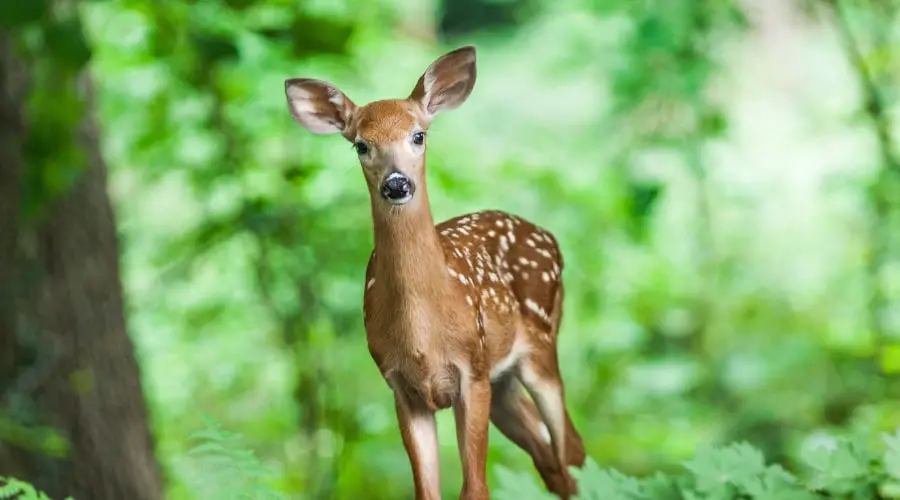Death is a constant spectre of life, and we have been fascinated for centuries by how it affects animals. Even Charles Darwin wondered if animals recognized death and mourned death.
While we understand that death is an inevitable part of life, do deer mourn their dead? Researchers and experts are inclined to agree, but there hasn’t been a final call yet. Deer will vocalize their distress and physically interact with the deceased by licking and nuzzling.
So, do deer feel complex emotions? Are they the only species that grieve? What about some real-world scenarios, and what does science say about it? So, keep reading to know everything about how the deer mourns.

Do Deer Mourn Their DeadLet Let’s Know In Detail
It’s time to dive deep to know if deer mourn their dead or not. We know about their feelings, real-life issues, and more in detail.
Do Animals Have Feelings?
Emotions, by nature, are complex. Joy, love, grief, surprise, and anger are linked to our higher intellect and advanced civilization. Scientifically speaking, there is no hard proof that any animals experience complex emotions. But that’s not to say that they don’t.
It’s been understood for millennia that animals feel pain, and it is that they feel fear, as they have sharp fight-or-flight instincts. Wild animals do not have an innate sense of mortality; they see death in action when their friends and family pass on in the wild.
This translates to animals’ relationship with such emotions, meaning they are not as inanimate as we might have thought.
Are Deer Capable of Mourning?
We have previously established that animals feel emotions complex enough and are aware of death. So, what about deer?
The short answer is that researchers are optimistic about it. Although there are not enough studies on the topic, observations suggest that deer have been observed nuzzling and licking the bodies of deceased herd members.
They have also been seen standing over the bodies of their dead for long periods, seemingly in mourning.
In one study, researchers found that deer who had lost a fawn were more likely to exhibit signs of stress and anxiety. The symptoms include increased heart rate and respiration. They were also less likely to eat and drink, and they spent more time alone.
Real World Scenarios
Deer encounters humans, sometimes leading to death, such as in car accidents or hunting.
When a deer is killed, its herd members may exhibit a variety of grieving behaviors. For example, they may stand over the body of the dead deer, nudge it, and lick it. They may also emit mournful calls.
After death takes place, members of the herd have been observed coming back to the area of death for the fallen member. And almost in a commemorative manner before moving forward with their daily activities.
Mourning Activities in Other Animal Species
Deer are not the only animals that have been observed grieving the dead. Elephants are one of the most well-known examples.
When an elephant dies, its herd members gather around the body and trumpet loudly. They may also touch the body with their trunks and feet. In some cases, elephants have been known to bury their dead.
Other animals that have been observed mourning their dead include chimpanzees, dogs, cats, horses, and dolphins. Each species has its unique way of dealing with grief.
For example, chimpanzees have been observed embracing each other and grooming each other after the death of a troop member.
Dogs may whine and bark, and they may refuse to eat or drink. Dogs are famous for their undying loyalty to their masters. This, in some cases, leads them to spend the rest of their lives in masters’ graves.
Horses may stand over the body of a departed herd member and push it. Dolphins may swim closely together and emit mournful whistles.
Although charismatic mammals make headlines, responses to death can also be seen in non-mammals, such as birds, like the foie gras ducks, and wild scrub days observed in the field. Even Magpie shows signs of grief. Some evidence has revealed that they even bury their dead.
Do Animals Mourn Their Dead?
The Scientific Take on The Phenomenon
Death is one of the most severe social events in a social species. Grief is something we see in highly social animals and is most often seen in individuals with close social bonds. This ultimately tells us a great deal about how mourning is an evolved response to acknowledging the idea of loss.
To the extent that nonhumans, i.e., deer, grieve, it has become a field of study in recent times. After all, nothing in biology makes sense except in light of evolution. This field of scientific research seeks to answer where animals fall as scientific beings or moral characters.
The vivid descriptions of deer’s mourning behavior with observations in the wild provide compelling evidence. However, the scientific basis for deer grief remains inconclusive, leaving room for further research and understanding.
Related: What Is The Lifespan Of A Deer
Final Nail in The Coffin
It is evident that the deer, along with many other intellectual animals, feel emotions. Grief for their dead is most apparent and noteworthy in deer society, and so on.
It’s not like these cute, gentle animals would shed tears like Bambi from the Disney animated movie. Or pull up to the funeral wearing black veils or anything overtly human like that. But visiting the location of their dearly departed is a pretty standard act among deer.
The scientific basis for the anecdotal evidence of deer grief is still unresolved. However, discoveries in just about everything follow day to day. As curious and adventurous as human minds are, we will likely gain a firmer grasp. Such as whether nonhuman creatures, including deer, mourn and grieve their deaths.
